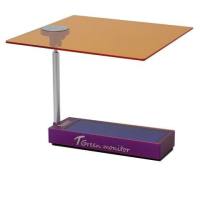A central part of the research in protein misfolding and its associated disorders is the development of treatment strategies based on ensuring cellular protein homeostasis. This often includes testing chemical substances or drugs for their ability to counteract protein misfolding processes and to promote correct folding. Such investigations also include assessment of how the tested chemical substances affect cellular viability, that is, their cytotoxic effect. Investigations of cytotoxicity often require testing several different concentrations and drug exposure times using cells in culture. It is therefore attractive to use a viability test that permits the analysis of many samples with little handling time. This protocol describes a simple and fast methodology to analyze viability of lymphoblastoid cells and to test putative cytotoxic effects associated with exposure to a chemical substance, here exemplified by celastrol. The natural substance celastrol has been used for many years in traditional Chinese medicine and has subsequently been shown to induce transcription of genes encoding molecular chaperones (heat shock proteins) that are involved in promoting folding of cellular proteins. The well-described colorimetric tetrazolium salt (MTT) assay, which monitors metabolic activity of cultured cells, was adapted to analyze the viability of cells exposed to celastrol. After having established a suitable cell seeding density, the dose-dependence and time-course of viability reduction of lymphoblastoid cells treated with celastrol were determined. It was found that 4- and 24-h exposure to 0.8 �M celastrol reduced the viability of lymphoblastoid cells, with the most severe effect observed at 24 h with MTT reductions approaching 30% of non-exposed cells. For a series of incubations for 24 h, it was found that concentrations as low as 0.2 �M were sufficient to affect the viability, and celastrol concentrations of 0.5 �M reduced the MTT reduction rate to approximately half the level displayed by cells receiving vehicle alone.






